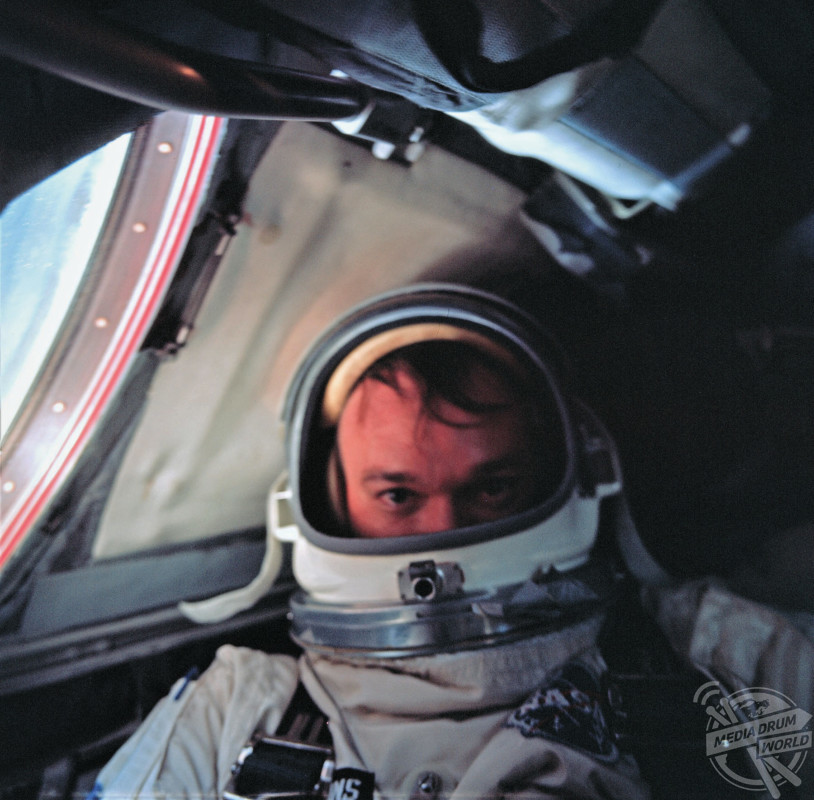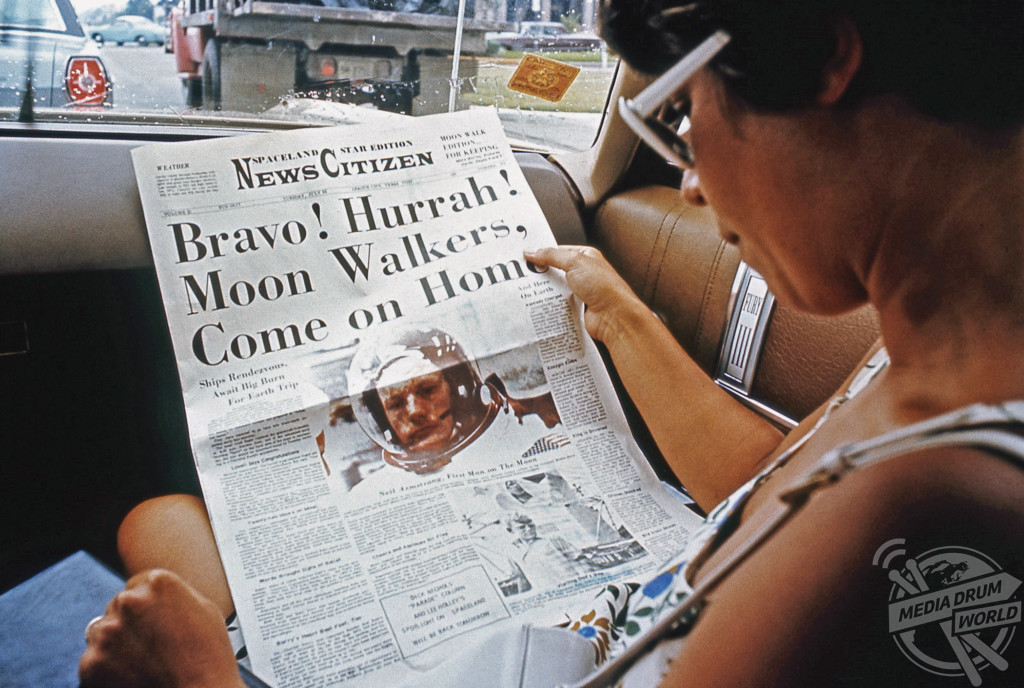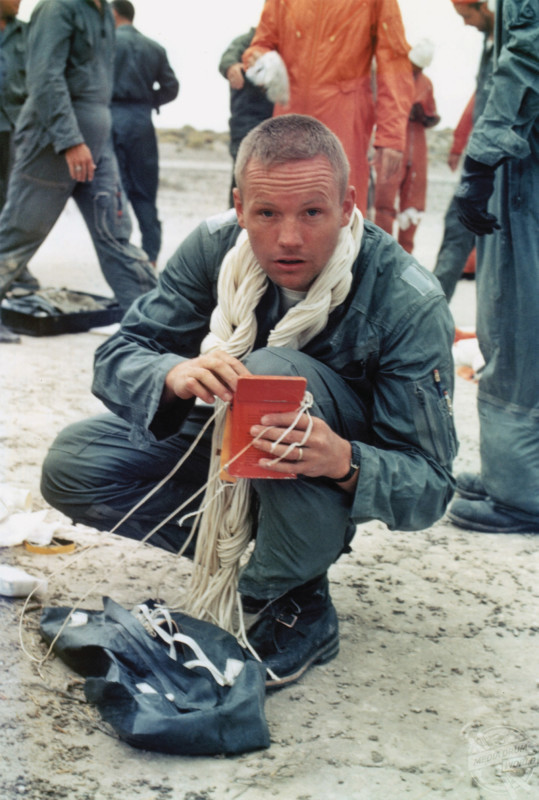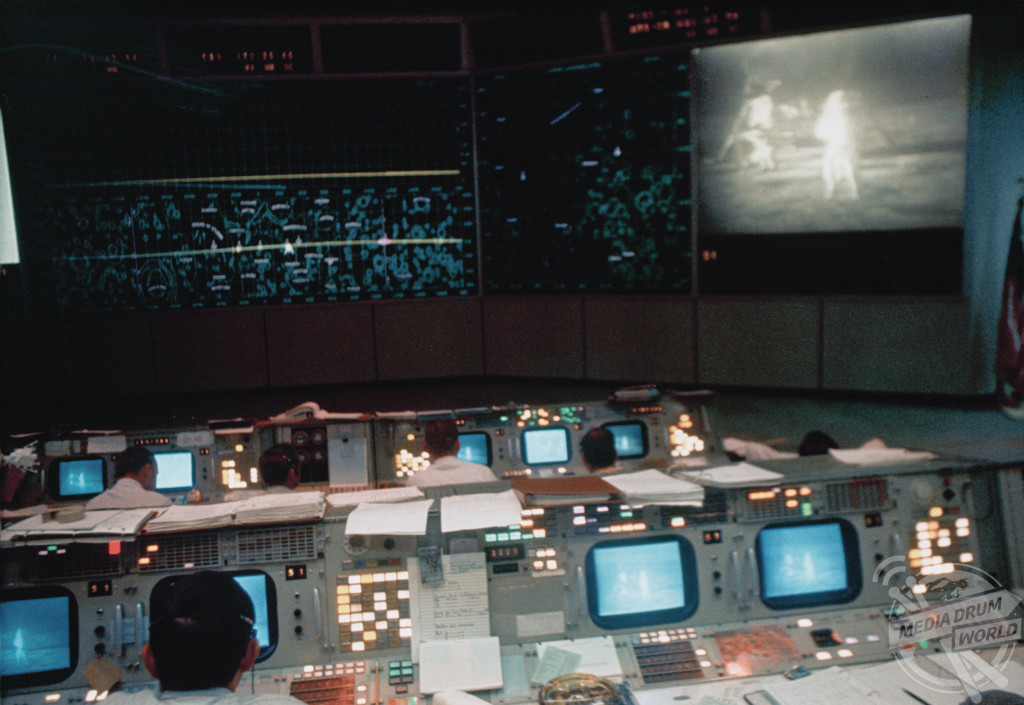By Alex Jones
OUT-OF-THIS-WORLD photographs reveal never seen before images of one of humanity’s greatest achievements – the 1969 moon landing.
The incredible images include a determined Neil Armstrong undergoing desert training with parachute chords draped around his neck, a dramatic close up of Michael Collins in extremely cramped conditions, and Buzz Aldrin in his iconic spacesuit during one of the final tests before blast off.

More stunning shots, which have been released to mark fifty years since the landmark occasion, show all three members of Apollo 11’s crew looking quietly confident standing before the newly unveiled Saturn V space rocket and a rare perspective of the watershed moment of Armstrong planting a flag on the moon.
The incredible images are included in ‘Picturing Apollo 11: Rare Views and Undiscovered Moments’, a fascinating new book by J. L. Pickering and John Bisney, due for release in the UK next month.
“The story of the first time humans landed on and explored our Moon has been told many times—by the Apollo 11 astronauts, by mission controllers, by NASA officials and historians,” explained John Bisney, who aged 15, was just 12 miles away from the launchpad on 16 July 1969, the day of the Apollo 11 launch.

“Yet we believe this book will help to fill in visually the events surrounding this landmark in exploration, since a large percentage of the images you see have never been published previously.”
Bisney was one of a million-strong crowd in Florida who watched the three Apollo 11 astronauts sat atop the Saturn V rocket at the Kennedy Space Center – the three-stage 363-foot rocket would soon use its 7.5 million pounds of thrust to propel them into space and into history.

Four days and 240,000 miles later, on July 20, 1969, Armstrong and Aldrin became the first humans ever to land on the moon in their Eagle lunar module, as Collins watched on from nearby orbit. Soon after, Armstrong became the first person to walk on the moon.
As he took his first step, Armstrong famously uttered his immortal words: “That’s one small step for man, one giant leap for mankind.”
An estimated 500 million people worldwide tuned in to watch Armstrong take his historic first steps on the Moon, the largest television audience for a live broadcast at that time and about 14 percent of the global population.
After spending a night sleeping on the moon, the pioneering astronauts left several artefacts on the lunar surface including a plaque which read: “Here men from the planet Earth first set foot on the moon—July 1969 A.D.—We came in peace for all mankind.”
Eight days after lift-off, the brave trio of Collins, Aldrin and Armstrong safely splashed down in the Pacific Ocean at 12:50 p.m. on 24 July, securing their place in the record books.

“When putting a book together, there is a fine line between choosing photos that are of interest as rare or unseen as opposed to using more familiar images that might, in some cases, tell a better story,” Pickering added.
“I have also become aware that photos I consider common are not always viewed that way by others.
“This applies especially to younger people, who may be seeing the ‘greatest space hits’ for the first time.
“That being said, this project, like our previous efforts, consists of as many unpublished images as possible, and we hope they give audiences of all ages some new views of the golden era of space flight.”
Picturing Apollo 11: Rare Views and Undiscovered Moments by J. L. Pickering and John Bisney, published by University Press of Florida, is available to buy here.






